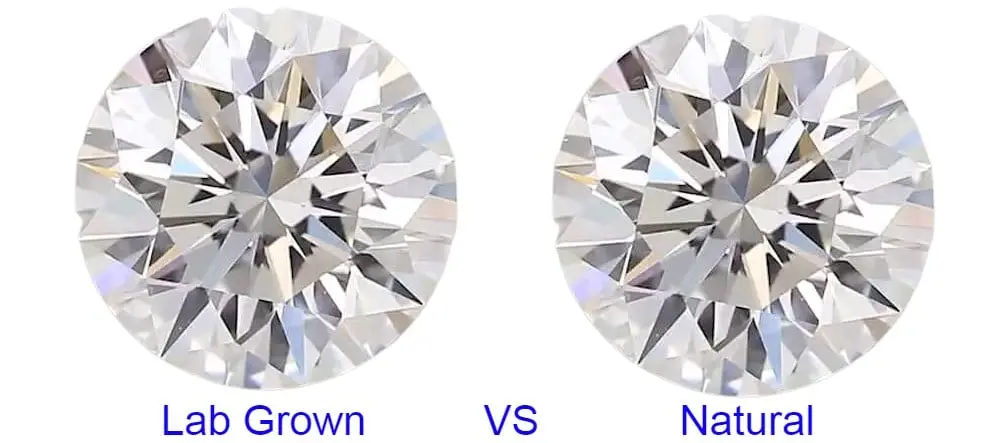Mined Diamonds Are Not Rare: Unveiling the Truth Behind the Sparkle

Diamonds have long been regarded as the epitome of rarity and luxury, often portrayed as a symbol of eternal love and enduring beauty. However, recent research and discoveries in the diamond industry suggest that mined diamonds are not as rare as they have been made out to be. This article explores the truth behind the claim that mined diamonds are not rare, shedding light on the complexities of the diamond market and its influence on consumer perception.
Table of Contents
ToggleThe Diamond Industry and Its Marketing Strategy
For decades, the diamond industry has expertly cultivated the perception that diamonds, particularly mined diamonds, are rare and precious. The iconic slogan “A diamond is forever” has been central to this marketing campaign, embedding the idea of rarity and exclusivity into the collective consciousness. However, the truth is that the vast majority of diamonds found in nature are not particularly rare. Mined diamonds are abundant in the Earth’s crust, with substantial deposits found across the globe. The rarity of diamonds has often been exaggerated through clever marketing tactics, creating a sense of artificial scarcity that drives up demand and prices.
Diamond Deposits Around the World
While it is true that some regions have more significant diamond deposits than others, it’s important to note that large-scale diamond mining operations are active in numerous parts of the world. Countries like Russia, Botswana, Canada, and Australia are known for their rich diamond reserves. In fact, the total global supply of mined diamonds continues to grow each year, further debunking the myth of their rarity. While certain high-quality diamonds may be less common, the overall abundance of mined diamonds shows that they are not nearly as rare as traditionally believed.
The Role of Synthetic Diamonds in the Market
In recent years, synthetic diamonds, also known as lab-grown diamonds, have gained popularity as an alternative to their mined counterparts. These diamonds are created through advanced technology that mimics the natural processes that occur deep within the Earth. Interestingly, the production of synthetic diamonds has increased rapidly, leading many to question the so-called rarity of mined diamonds. With the ability to produce diamonds on demand, it becomes evident that the concept of diamond rarity is, to a large extent, a construct designed to maintain high market prices. As synthetic diamonds become more mainstream, the argument that mined diamonds are not rare is gaining ground.
Diamond Mining and Environmental Concerns
The environmental impact of diamond mining is a significant factor in the growing interest in synthetic diamonds. Mined diamonds require extensive excavation and processing, which can have devastating consequences for the surrounding ecosystems. In some regions, diamond mining has led to deforestation, soil degradation, and pollution of nearby water sources. As awareness of these environmental issues increases, many consumers are opting for lab-grown diamonds as a more sustainable and ethical alternative. This shift in consumer behavior further highlights the fact that mined diamonds are not as rare as they have been made out to be. The availability of synthetic diamonds suggests that the real value of man made diamonds lies more in their social and cultural significance than in their inherent rarity.
The Price of Mined Diamonds
The high price of mined diamonds is another factor that contributes to the misconception of their rarity. Diamond prices are not solely determined by the scarcity of the stones but are heavily influenced by market forces, including supply, demand, and branding. Mined diamonds are often priced at a premium due to the costs associated with exploration, extraction, and distribution. However, with the increasing availability of synthetic diamonds, which are typically more affordable to produce, the inflated prices of mined diamonds are becoming more difficult to justify. The fact that diamonds can now be created in a laboratory at a fraction of the cost further reinforces the idea that mined diamonds are not as rare as they are often portrayed.
Changing Consumer Preferences and the Future of Diamonds
As more consumers become aware of the fact that mined diamonds are not rare, their purchasing decisions are shifting. People are increasingly choosing synthetic diamonds, not only for their lower price point but also for their environmental and ethical benefits. This shift in preference has led to the rise of alternative diamond retailers that offer lab-grown diamonds as a sustainable and cost-effective option. The future of the diamond industry may very well lie in these synthetic alternatives, as they provide a more transparent and accessible option for those who value the beauty of diamonds but question their perceived rarity.
Conclusion
In conclusion, the notion that mined diamonds are rare is largely a myth perpetuated by marketing campaigns and traditional industry practices. The reality is that diamonds are not as scarce as many believe, with abundant reserves of mined diamonds found across the globe. Moreover, the rise of synthetic diamonds and their growing popularity has further challenged the idea of diamond rarity. As consumer preferences shift towards more sustainable and affordable alternatives, the diamond industry will likely continue to evolve, with a focus on providing ethical and accessible options to the modern consumer. Mined diamonds may have once been considered rare, but the truth is that they are more plentiful than we have been led to believe.


:max_bytes(150000):strip_icc()/Web_1500-bri-lab-grown-diamonds-test-ritani-r3-jthompson-0553-145b55fc41804261b85c96b1ca63a28b.jpg)



